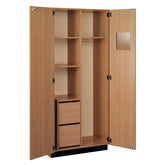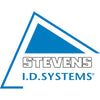Types of Classroom Furniture: What's Essential for Your School?
When a teacher moves into a new classroom, whether they are just starting at the school or just shifting rooms, the school typically provides the basic necessities that every classroom needs—such as desks and chairs. Teachers usually have the freedom to then fill the rest of the room with pieces from their own pockets, creating a unique and stylized learning environment for their students.
However, the furniture pieces you and your school choose for your classroom do more than just add to the aesthetics of the room. The layout and style of your classroom can have an impact on your student's learning experience and engagement with the lessons. Whether you are designing a science lab classroom or a history classroom, it is important to choose furniture pieces that will set your students up for success and get them excited about learning.
|
Table of Contents |
So, what furniture pieces should schools be implementing in their classrooms? The goal of this article is to open a discussion with educators and school administrators about the importance of good-quality classroom furniture and storage solutions in improving student learning and engagement. The focus will be on furniture that balances comfort, flexibility, and functionality for both students and teachers.
Student Desks and Chairs: Comfort and Ergonomics
To start, we will go over important factors to consider for student furniture pieces such as desks and chairs. An important thing to keep in mind is the ergonomics of the furniture pieces. In other words, whether the furniture is designed with both comfort and productivity in mind. The desks and chairs in your classroom should also be the appropriate size for your group of students, as this can promote healthy posture and student comfort.
Have you ever sat in an uncomfortable chair during a meeting and struggled to focus on the material because your back was starting to hurt? The same thing can happen with your students. Uncomfortable or poorly-fit desks and chairs can lead to more distractions and a decrease in student productivity and engagement.
Some desk styles to choose from can include adjustable desks, traditional desks, collaborative desks, and standing desks. Choosing the right type of desk for your classroom can feel tricky with so many options on the market. However, you do not have to limit yourself to one style of desk. It is encouraged that you offer students a variety of options to accommodate various learning styles.
What are some examples of ergonomic classroom furniture that accommodates students with a wide variety of learning styles? An option that is growing in popularity in both classrooms and the corporate world is a desk with an adjustable height. This allows students to be able to sit or stand while they work depending on their needs, and the desk can be raised or lowered to accommodate students of different ages and heights. These desks pair nicely with adjustable chairs that allow students to sit as high or as low to the ground as they need.
Teacher's Desk and Chair: Command Center of the Classroom
When discussing functionality and ergonomics for school furniture, students are not the only ones who should be taken into consideration. Teachers also need furniture pieces that will set them up for success as educators and prepare them for a successful year of academic learning. Teachers are the backbone of the classroom, and they need proper support so they can properly support their students throughout the academic year.
The most important and frequently-used piece of furniture for a teacher is their desk. This is their command center for the entire classroom, and it should be set up to maximize efficiency and productivity. Key features of a well-built teacher’s desk include adequate storage space for teaching supplies, options for organization, and easy mobility and flexibility. Whether a teacher prefers to stand and walk around the classroom or sit at their desk during lessons, their desk should be able to accommodate their needs as the leader of the classroom.
Of course, no desk is complete without a proper chair. A teacher’s chair should have an ergonomic design that promotes comfort during long hours of teaching and grading papers while also encouraging productivity and efficiency. No one wants to teach for hours with a sore back or shoulders—a good quality chair can set a teacher up for success as they manage their classroom.
A teacher’s desk and chair should be able to work with their teaching style and provide flexibility for teachers to need to change things on the fly. Be on the lookout for desks with built-in storage and easy mobility, as they can promote flexibility while also helping teachers keep their space organized and clutter-free.
Every teacher has a unique style for their teaching methods, and their desk and chair should be able to accommodate that style while still encouraging productivity and ergonomics.
Classroom Storage Solutions: Organizing Supplies for Efficient Learning
Desks and chairs are not the only furniture pieces that you see in an average classroom. With a seemingly endless list of teaching materials and resources, teachers need a way to store it all so it does not pile up in the middle of the classroom. No teacher wants to try and teach a lesson over a large stack of papers.
Proper storage can not only make a space feel neat and tidy, but it also promotes efficient learning and student engagement. How do you feel when you walk into a room and there is clutter everywhere? You can start to feel stressed and cramped, and students can feel the same way in a disorganized classroom. Students and teachers alike can benefit from proper storage options that tuck away the clutter and leave a clean and organized learning environment.
Storage systems for classrooms can include cabinets, cubbies, bookshelves, and even mobile storage carts. These storage options can be tailored to meet your classroom’s specific needs and space requirements. From a science lab to a math classroom, there are storage options that will work for your classroom and your specific student age group.
Along with teaching supplies, students also have personal items and belongings that need to be properly organized and stored to prevent items from getting misplaced or lost. Storage options such as cubbies and lockers can help keep students’ belongings tucked away and organized so they do not add to the clutter of the classroom.
Collaborative Furniture: Encouraging Interactive Learning
School furniture that focuses on ergonomics and comfort can also help promote and encourage interactive learning among students. Shifting away from standard desks all in a row facing the front of the classroom and towards collaborative and project-based learning can get students more excited about learning and more engaged with the material.
Collaborative learning does more than just get students excited about learning; it also teaches them valuable life skills that they will take with them outside of school. Working with their peers helps build skills such as effective communication and teamwork, as well as planning and time management.
Collaborative furniture pieces that encourage students to engage with their peers include group tables, modular seating, and even flexible seating arrangements that allow students to move around the classroom and create their own pods. Choosing furniture pieces that are adjustable and easy to move allows you, as the teacher, to easily reconfigure your classroom for various activities or projects.
Soft seating options are great for allowing students to get up and move around the classroom while still engaging with the lesson and their peers. These can include options like beanbag chairs, wobble stools, and lap desks. Need inspiration for your classroom? Stevens ID Systems has a Versa Collection of collaborative furniture pieces that you can browse to start brainstorming your own ideas.
Science Lab Furniture: Specialized Equipment for Hands-On Learning
Your science classroom furniture needs will vary depending on the subjects that you are teaching. Teachers who focus on science and work in labs alongside traditional lessons need specialized furniture pieces that can withstand the wear and tear of an active classroom. Science classrooms need durable and safe furniture pieces that are chemical-resistant and strong enough to handle various lab experiments.
What types of furniture do you need for a classroom science lab? While the specifics can vary depending on what grade level you are teaching and the types of labs that you do with your students, the basic pieces that you would need include lab tables, clean and durable work surfaces, proper storage for lab equipment, and stools or chairs that are also durable.

The big thing to keep in mind when choosing classroom furniture for science labs is to make sure that they are compliant with lab safety regulations and protocols. This means that science tables need to be chemical and fire-resistant, and supplies need to be safely stored when not in use. A great storage option for science labs is a base/hutch combo that provides both a clean working space and proper storage.
Technology Integration: Furniture for Digital Learning
As technology continues to grow and improve, classrooms need to adjust to accommodate them in the learning environment. Digital learning is continuing to expand, and both teachers and classrooms need the tools necessary to keep up with the change while still promoting active student learning.
What furniture can schools invest in to better accommodate digital learning tools? Look for furniture pieces that have technology integration, such as cable management and charging options. These furniture pieces can include computer desks, mobile device storage cabinets, and charging stations.
While it may seem like a hassle to invest in these new furniture pieces, they provide significant benefits for creating a positive learning environment. Having furniture pieces with built-in power outlets and cable management systems can save you the hassle of keeping your classroom technology organized on your own. Cable management and charging for over 20 devices can be overwhelming, and these furniture pieces can help take some of that hassle off of your shoulders.
Not sure where to start looking for furniture with technology integration? A great place to start is to look into computer storage cabinets with built-in power outlets and cable management. These can keep laptops and other mobile devices safely stored while making sure they are always charged and ready to go. If you have the space, computer workstations are another great option to create digital learning spaces in your classroom.
Essential Classroom Furniture for Your Learning Environment
It can be very exciting to shop for fun classroom furniture pieces that match your aesthetics and the energy you want to bring to your space. But the furniture you choose is more than just for the vibes. Choosing the right furniture for your space can impact the productivity of your classroom and create an organized learning space where students can thrive.
The furniture you choose can improve the classroom experience for both students and teachers, and the right pieces can set your students up for academic success. When shopping for classroom furniture, consider pieces that balance flexibility, ergonomics, and technology compatibility.
Are you in the market for new classroom furniture pieces but are not sure where to look? Stevens ID Systems has a whole catalog of classroom furniture lines that are tailored to any age range and any classroom setup. We have furniture options for both students and teachers to make sure you and your classroom are set up for success.
Download our catalog and browse our wide selection of furniture options. Our larger furniture pieces have the option to ship to your school pre-built, saving you the time and hassle of building furniture by yourself. No matter the size of your classroom or the subject you teach, we have the right furniture to meet your needs and create a positive learning environment for your students.
















